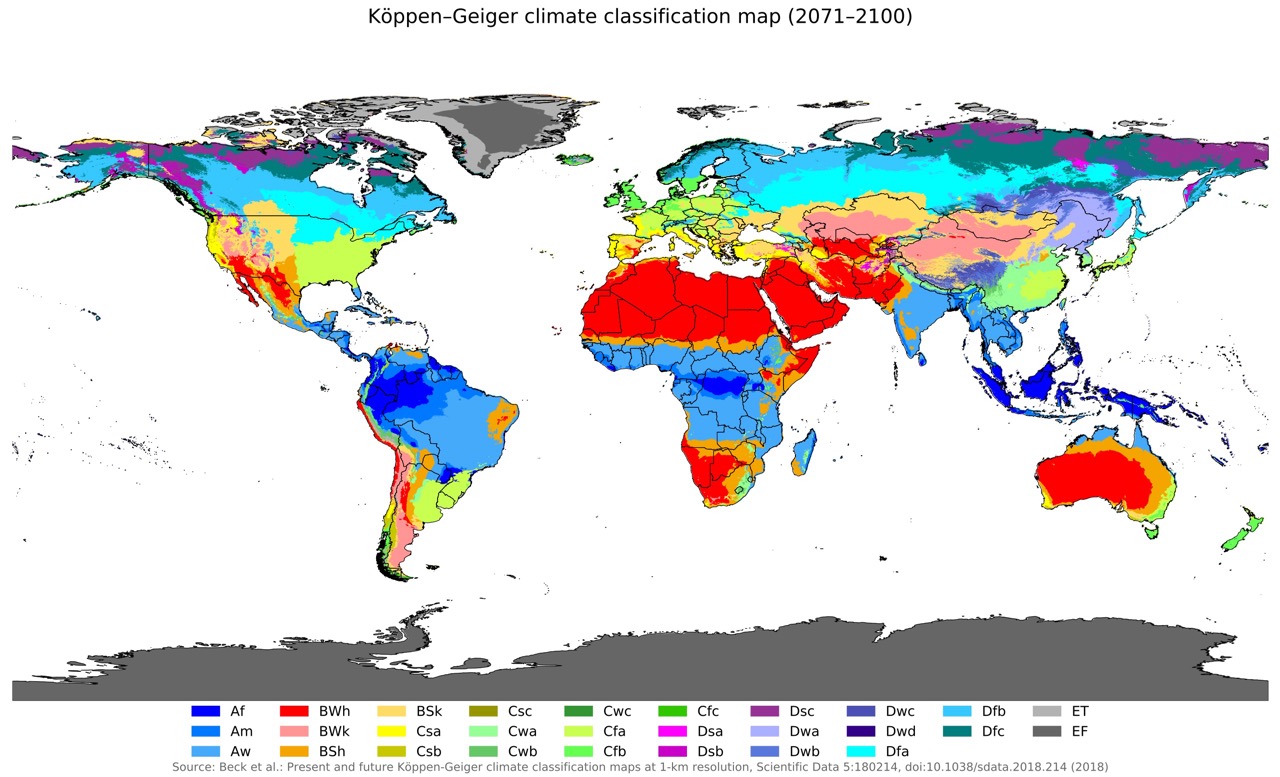Introduction: A Climate for Every Bonsai
Bonsai, a refined art and precise science, requires a deep understanding of each tree's needs to help it thrive. Among the many factors to consider, climate stands out as one of the most influential. The Köppen-Geiger climate classification system, widely recognized for its accuracy, is an invaluable tool for understanding how climate affects bonsai and adapting care accordingly. By better understanding the interactions between tree needs and climatic specifics, bonsai enthusiasts can create environments conducive to their trees' flourishing.
Understanding the Köppen-Geiger Classification
A Scientific Approach to Climates
Developed in the early 20th century by Wladimir Köppen and refined by Rudolf Geiger, this classification is based on measurable criteria such as average temperature, annual precipitation, and its seasonal distribution. The system identifies five main categories:
Tropical: Warm zones with abundant rainfall, ideal for tropical trees that require high humidity.
Arid: Dry climates with little to no rain, requiring specific irrigation techniques for bonsai cultivation.
Temperate: Regions with well-defined seasons, perfect for maples and other species adapted to seasonal variations.
Continental: Areas with cold winters and hot summers, posing specific challenges for winter protection.
Polar: Cold regions where outdoor bonsai cultivation is nearly impossible without suitable infrastructure.

Köppen-Geiger classifications use a three-letter code to represent these climates: the first letter indicates the primary type (e.g., A for tropical, B for arid), the second specifies precipitation characteristics (e.g., w for a dry winter, s for a dry summer), and the third describes temperatures (e.g., a for a hot summer, c for a cool summer). These distinctions allow for a precise understanding of local climate variations, providing a detailed global climate map and enabling optimal bonsai cultivation planning based on specific constraints.
The Crucial Link Between Climate and Bonsai
Natural and Precise Adaptation
Climate is one of the primary factors influencing bonsai growth, health, and longevity. Here are some essential points:
Growth and survival: Each species has evolved to thrive in a specific climate. For example, ficus trees, native to tropical regions, require consistent temperatures and high humidity.
Root and foliage health: Climatic variations such as extreme temperatures, prolonged drought, or extended humidity can weaken bonsai, making them vulnerable to disease.
Species adaptability: While some species, like pines, tolerate various climates, others, like azaleas, demand stricter conditions to thrive.
Using Köppen-Geiger to Master Your Bonsai
A Practical Guide for Bonsai Enthusiasts
Applying Köppen-Geiger classifications to bonsai cultivation allows horticultural practices to be tailored to climatic constraints. Here are some steps:
Identify your climate zone: Consult Köppen-Geiger maps online to pinpoint your region and understand its climatic specifics.
Select suitable species: Choose trees whose needs align with your climate. For example, junipers for arid zones or maples for temperate climates.
Adopt adapted techniques: When cultivating species outside their natural zone, use greenhouses, winter protections, or automated irrigation systems to compensate for inadequate conditions.
Case Studies: Bonsai and Climates
Concrete Examples for Inspiration
Humid tropical climate: Ficus and other tropical species thrive with consistent humidity and high temperatures. Frequent watering and indirect sunlight exposure are crucial for their health.
Temperate climate: Japanese maples and Scots pines flourish in these regions. However, they require specific care during winter to prevent root freezing.
Arid zones: Junipers are particularly drought-resistant. Use a well-draining substrate and water moderately to avoid excess moisture.
Anticipating Climate Change
Preserving Your Bonsai Amid Global Transformations
Global warming is gradually altering the climate zones defined by Köppen-Geiger. These changes directly impact bonsai cultivation:
Shifting climate zones: Regions traditionally suited for certain species may become inhospitable due to rising temperatures or changes in precipitation.
Adapting practices: To counter these effects, it is crucial to anticipate and diversify techniques, such as using specialized substrates or protections against extreme heat.
Resources and Tools for Bonsai Enthusiasts
Solutions Within Reach
To fully leverage the benefits of Köppen-Geiger classifications:
Climate applications: Explore digital tools that provide detailed information about your climate zone.
Specialized guides: Consult resources that explain how each bonsai species reacts to different climates.
Appy Bonsai offers precise data on over 18,000 species, including recommendations tailored to your region.
Conclusion: Cultivating with Confidence
The Köppen-Geiger classification is more than a scientific tool. It is a valuable guide for all bonsai enthusiasts, whether beginners or experts. By understanding the interactions between climate and bonsai needs, it becomes possible to cultivate vigorous and beautiful trees while anticipating the challenges posed by climate change.
Take Action
Use Appy Bonsai to discover the species best suited to your climate and access personalized tools to perfect your techniques. By adapting your practices, you ensure a promising future for your bonsai.

















